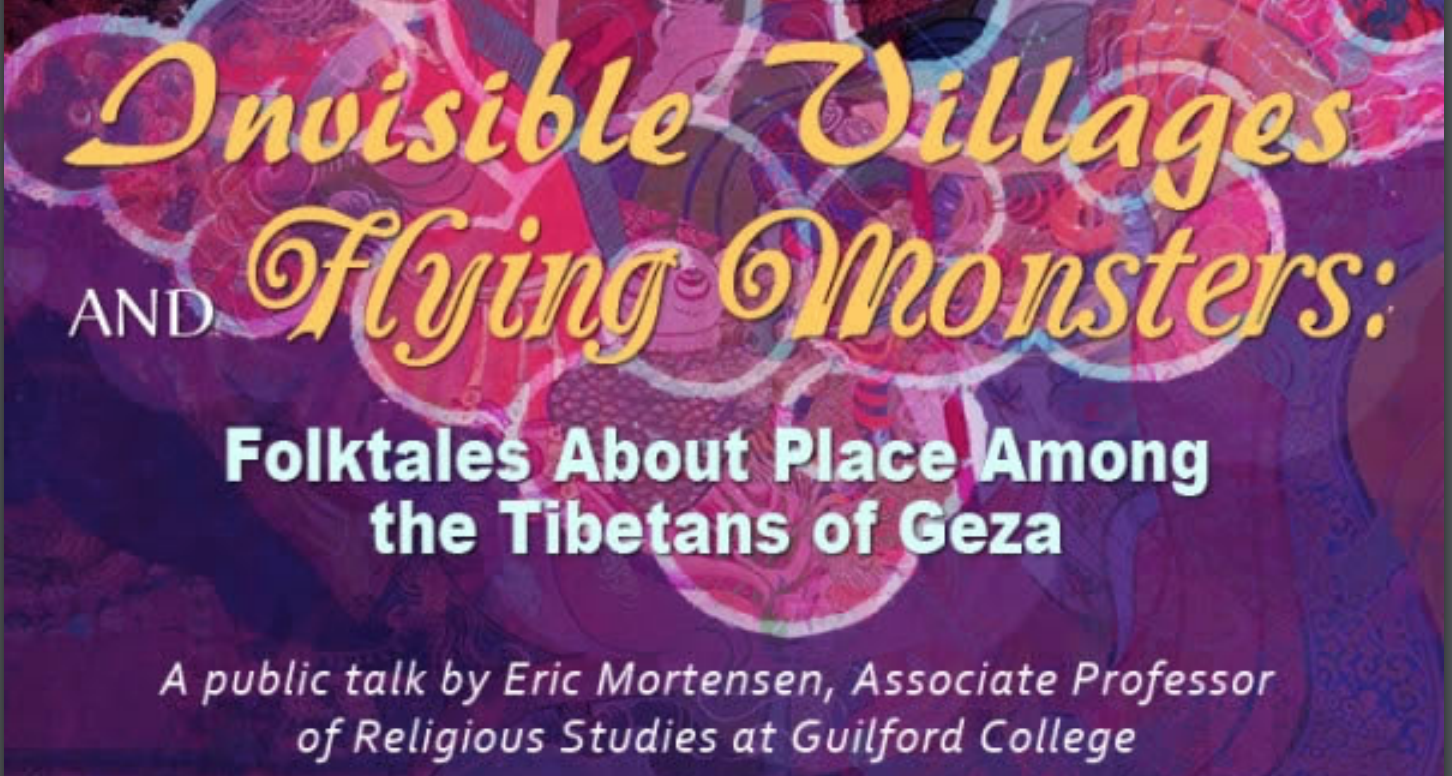
Invisible Villages & Flying Monsters: Folktales About Place Among the Tibetans of Geza
February 19, 2014 , 10:00 pm – 11:30 pm

Invisible Villages & Flying Monsters:
Folktales About Place Among the Tibetans of Geza
Public Talk by Eric Mortensen
Wednesday, February 19, 2014
5-6:30PM55 W. 13th St., 2nd Fl., Dorothy Hirshon Suite
The mountains of Geza are awash in old tales about invisible villages and wild people (Tibetan: nags myi rgod). This presentation assesses the oral performances of nags myi rgod stories, with a focus on the specific stories surrounding the flying monster called the myi rgod shung shung. In the Tibetan communities of Geza Township in rGyalthang (Xianggelila County of Northwest Yunnan Province), such stories are tied to the cultural memory of local geography, including the invisible village of Panlung, which can be heard but not seen.
Specifically, this project compares twenty six variant nags myi rgod stories and interview information about nags myi rgod collected and digitally recorded on four separate fieldwork trips to the Geza villages of Langdu, Gönpa, Geza (brgya rtsa), Nagara, and gter ma rong village in neighboring Dongwang. Although nags myi rgod (& Chinese ye ren) stories are widespread throughout Tibet and the Himalayas, several of the stories from Geza contain variant descriptions of an invisible village called Panlung. In the stories, a mushroom gatherer or herder – who was often identified as a relative of the storyteller – would stop in wonder and hear the rushing water and agricultural sounds typical of village life, but the village could (at least initially) not be seen. Nags myi rgod, who live in the forests looking down on the bucolic invisible village, mischievously invert human farming efforts and hunting practices and thereby make the village of Panlung uninhabitable, even for those lucky enough to breakthrough the invisible meniscus and see or enter the valley with its perfect pasturage and farmland. The stories involve frightful encounters with nags myi rgod, and longer tales recount how clever hunters or farmers trick the nags myi rgod, and escape being killed (through being tickled to death, squeezed, or pulverized by a nags myi rgod’s armpit stone) or used as a mate. Some families in the region maintain the surname Panlung, and consider themselves refugees from the invisible village. Panlung, also known as Zayzong in Nagara (zay zong is near to Bala) and Natöeyong in Dongwang, appears in many of the stories with the refugee element as the most common theme.
The centerpiece of the project is a comparative analysis of the performative function and cultural meaning of the invisible village in story. What does it mean for individuals to be refugees from an invisible dystopian village while facing current cultural, economic, and religious repression related to the land itself? In the context of this oral tradition, why, when, by whom, and to who are these stories of inversion and reversal told? [Degh 1958; Doniger 1998] To what degree are the performances of nags myi rgod tales subversive, intended for cultural maintenance, or simply fun for children? How can the variant tales inform upon the interrelated dynamics of place, identity, lament, and memory? [Mueggler, 2001]. As the myi rgod shung shung story is directly tied to features of the landscape of Geza, how do the performances of these stories contribute to local identity and inform upon the imagining of inhabitation of wildspace in this rapidly changing region?
Eric Mortensen is currently an Associate Professor of Religious Studies at Guilford College, located in Greensboro, NC. He complete his undergraduate studies at Carlton College and had the opportunity to study abroad in Beijing, Nepal, India, and Bhutan. Upon graduating in 1993, he spent his graduate career at Harvard, where he studied languages, anthropology, religion, folklore, and history for ten years. During this time, he grew to love teaching and Asia, further fostering an academic interest in Tibetology. These two loves drew him to Guilford and its Religious Studies Department. Although he does not hold a degree in religious studies, he has made religion his specialty through his focused research on Buddhist religion and culture.

